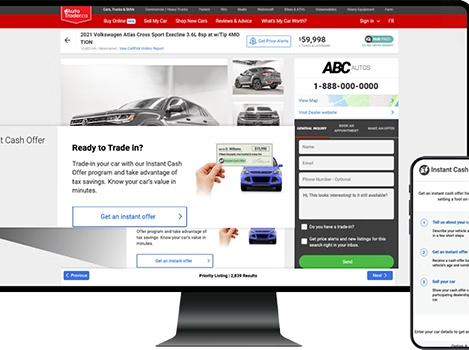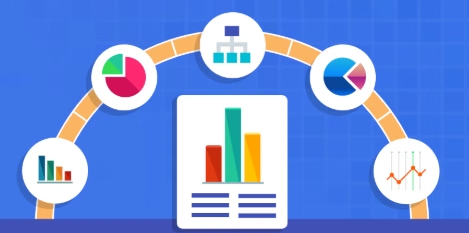I’ve heard it over and over again: the best channel is direct-from-consumer. You must have a robust appraisal lane. You must have a service drive acquisition program. You must take in every trade.
And while all of those statements hold truth, here’s the reality—without the right strategy, you can lose just as easily in those channels as you can at the auction.
The difference is that the losses are often hidden. You don’t see transportation costs. You don’t see auction fees. But make no mistake—if you buy the wrong car because you’re relying on bad data, outdated assumptions, or gut feel instead of facts, that car can quietly drain your margins. Sure, you might still turn it for a profit, but it’s often a fraction of what it could have been if you’d used the right strategy from the start.
That’s what separates the leaders from the laggards. Companies like CarMax and Carvana win not because they have access to a secret channel, but because they execute with discipline. They use data to define exactly what to buy, how much to pay, and where to source it. They remove emotion and rely on precision.
Conversely, I’ve watched dealers walk into an auction with a clear plan, disciplined guardrails, and a data-driven approach—and walk out with a handful of absolute winners. They knew what they wanted. They knew what they were willing to pay. And they had the discipline to walk away when the numbers didn’t make sense.
That’s the real lesson. Dealers who succeed—whether in direct-from-consumer, auction, rental, or even consignment channels—win because of discipline and strategy, not because they chose the “right” channel. Every channel can work. Every channel can fail. The difference is how you approach it.
What Bad Strategy Looks Like
Bad strategy isn’t just about making poor buying decisions — it’s about why those decisions happen in the first place.
More often than not, it starts with emotion.
You see it when someone stretches on a number because they “just know” that car will sell. You see it when a buyer chases a vehicle they’ve had success with before, even though the market has shifted. You see it when dealers forget that data, not nostalgia, drives profit. That’s emotion overruling execution.
Bad strategy also shows up when there’s no clear plan. You can’t just “decide to buy cars” from a particular channel without knowing what the goal is. Are you filling a specific segment gap? Chasing a turn-rate target? Balancing aged inventory? Without that clarity, you end up reacting instead of executing — and reaction almost always costs money.
And then there’s the silent killer: a lack of understanding of your own sales data. When dealers don’t know what’s actually selling — what trims, price points, and day-to-turn averages are moving — they end up buying inventory that looks good on paper but sits in reality. Without that discipline, every channel feels like a gamble instead of a system.
Bad strategy, at its core, is a lack of discipline. It’s what happens when decisions are driven by emotion instead of evidence. The best dealers — the ones who consistently win across every sourcing channel — build their strategy around structure, data, and process.
It Shows Up in the Details
This shows up in something as simple as exterior color. I’ve walked lots where over half of the inventory is white — row after row of the same look and feel. On paper, that might not sound like a big deal. After all, white vehicles are clean, safe, and popular. But in practice, it’s a symptom of poor strategy.
When half your lot looks identical, you’re not managing inventory diversity — you’re managing inventory duplication. That means fewer eyeballs on your cars online, lower engagement, and reduced profit potential. Why? Because customers are drawn to selection. They want choices that reflect personality, lifestyle, and individuality.
Dealers who let their lots fill with one color or one trim aren’t making data-driven decisions — they’re making emotional or lazy ones. It happens when buyers say, “White always sells well,” instead of asking, “What colors are actually turning fastest in our market, at our price point, with our audience?”
The result? A lot that looks full but feels flat. That’s what bad strategy looks like in action — a lack of data discipline expressed through something as basic as paint color.
How Each Channel Can Be Profitable
Every acquisition channel has its own rhythm — its own opportunities and challenges. The key isn’t to pick one and go all in. The key is to understand the unique levers that drive profitability in each.
Instant Offers — Volume, Velocity, and Visibility
Instant Offer leads look easy on paper — plug in a widget, watch the cars roll in, right? But anyone who’s actually run this channel knows it’s far more complex. To win here, you must cast a very wide net. That means putting an offer on as many vehicles as possible, not just the ones that seem like “easy wins.”
This channel rewards volume and velocity. The more offers you make, the more at-bats you get. But volume alone isn’t enough — you need precision in your pricing strategy.
That’s where AutoAcquire AI changes the game. Our platform allows dealers to set their own Value Dials — customized parameters based on each store’s specific market, inventory mix, and acquisition appetite. Instead of relying on static, one-size-fits-all pricing, dealers can dynamically adjust their offer aggressiveness in real time. Whether you’re competing in a high-demand metro or a low-supply rural area, your Value Dials ensure that every offer aligns with your local strategy and profitability goals.
If your dials are too conservative, your offer-to-appointment ratio plummets. Too aggressive without process, and you buy mistakes. AutoAcquire AI empowers you to find the right balance — to compete intelligently while protecting your margins.
Instant Offers also require a strong follow-up discipline. Far too many stores treat them as a one-shot lead: make the offer, wait for the customer, move on. The truth is, only a small percentage respond on the first touch. The winners have structured follow-up — SMS, email, and call cadence that stretches across several days. Every unresponded offer is still a live opportunity.
And finally, speed matters. The faster your team can respond, the higher your conversion rate. Every minute between the offer and contact reduces trust and intent. The best-performing stores respond in under five minutes — and they do it with real people, not just automation.
When executed properly, Instant Offers become a pipeline of highly motivated sellers. Done right, it’s one of the most scalable channels you can operate. Done wrong, it’s a leaky bucket that looks busy but rarely converts.
With AutoAcquire AI, that discipline becomes scalable — a structured, data-driven process that puts your team in control of every offer, every time.
Service Drive Acquisition — Turning Routine Maintenance into Retail Opportunity
The service drive might be one of the slowest-burning acquisition channels, but when executed correctly, it’s also one of the most profitable and relationship-rich. The key is understanding that this channel isn’t about immediate volume — it’s about consistent, incremental wins that compound over time.
The average service drive conversion rate hovers around 2–3%, even when actively worked. That means success here isn’t about luck — it’s about intentional process and persistence.
Visibility and Mindset
Every advisor and technician must understand they’re part of the acquisition ecosystem. The service lane isn’t just about oil changes — it’s about opportunity discovery. Vehicles come through daily with high equity, aging warranties, or signs of reconditioning fatigue. Each of those touchpoints represents a potential acquisition.
Data Integration and Triggers
This is where AutoAcquire AI brings measurable impact. By integrating with the dealership’s CRM and DMS data, the platform identifies service customers with the highest equity, ownership tenure, or repair estimates and automatically surfaces them as high-probability acquisition targets. This eliminates guesswork — turning routine maintenance appointments into smart, data-backed buying opportunities.
Consistent Offer Process
Success in this channel comes from structure. Advisors can’t casually mention, “We’d buy your car,” and expect results. There needs to be a defined pitch, a follow-up cadence, and accountability. AutoAcquire’s workflow tools help teams track every touchpoint, log every offer, and automate reminders so that no lead falls through the cracks.
Internal Coordination
Your sales and service departments must operate as one team, not two silos. The best-performing stores treat acquisition as a shared mission — not a side hustle. When coupled with AutoAcquire’s unified dashboards, leadership can finally see the full picture: where opportunities are emerging, where they’re being missed, and where small tweaks can drive major wins.
When run correctly — and measured through data — the service drive becomes the heartbeat of your acquisition strategy. It provides steady deal flow, reinforces brand trust, and creates a self-sustaining ecosystem where customers return not just to service — but to sell.
Auction Acquisition — Where Discipline Turns Perception Into Profit
I’ve heard it all: “The auctions are terrible.”
“The fees are highway robbery.”
“Transportation costs kill your margins.”
And while those statements aren’t entirely wrong, they’re not entirely true either. The auction is only as bad as your strategy allows it to be.
Yes, there are fees. Yes, transportation can be costly. But there are also countless opportunities to mitigate those costs — from finding vehicles with reduced fees, to sourcing cars from nearby lanes, to leveraging digital auctions that eliminate the need for travel altogether. The key, again, is discipline.
Success at the auction is not a part-time job. It requires patience, focus, and the willingness to look at hundreds of cars just to buy a handful. But isn’t that exactly how other channels work?
In the service drive, you might convert 2–3% of opportunities.
In your car-buying program, you might convert 20–25% of appraisals.
The auction isn’t that different — it’s another channel where volume and discipline define the winners.
So what’s the answer? It’s culture.
Create a culture where strategy and discipline guide your acquisition team. Where every purchase is intentional. Where you appraise as many cars — in person and virtually — as possible.
AutoAcquire AI reinforces that discipline by giving dealers real-time data visibility across every channel — including auction performance. From historical ROI by VIN segment to tracking how purchased units perform at retail, AutoAcquire helps acquisition teams make smarter, more consistent decisions.
During my time at CarMax, it was common for my teams to complete over 2,500 in-person appraisals a month and retail 500–600 cars. That’s a 5:1 ratio. Every appraisal mattered. Every touchpoint built intelligence. That’s the same mindset required to win at auction today.
You’re not going to build a high-performing acquisition engine overnight — but with the right strategy, culture, and AI technology, you can get very close.
The Bottom Line
Every channel has profit potential — service drive, auction, rental, consignment, or direct-from-consumer. None of them are inherently good or bad.
What separates winners from losers is discipline.
• Discipline to follow the data.
• Discipline to have a plan before you buy.
• Discipline to walk away when emotion tries to take over.
Because at the end of the day, it’s not about the cars you buy — it’s about the strategy behind every one of them.
And that’s exactly what AutoAcquire AI was built to support — empowering dealers to turn discipline into data, and data into predictable profit.
Featured Blog
Lorem ipsum dolor sit amet, consectetur adipiscing elit.






